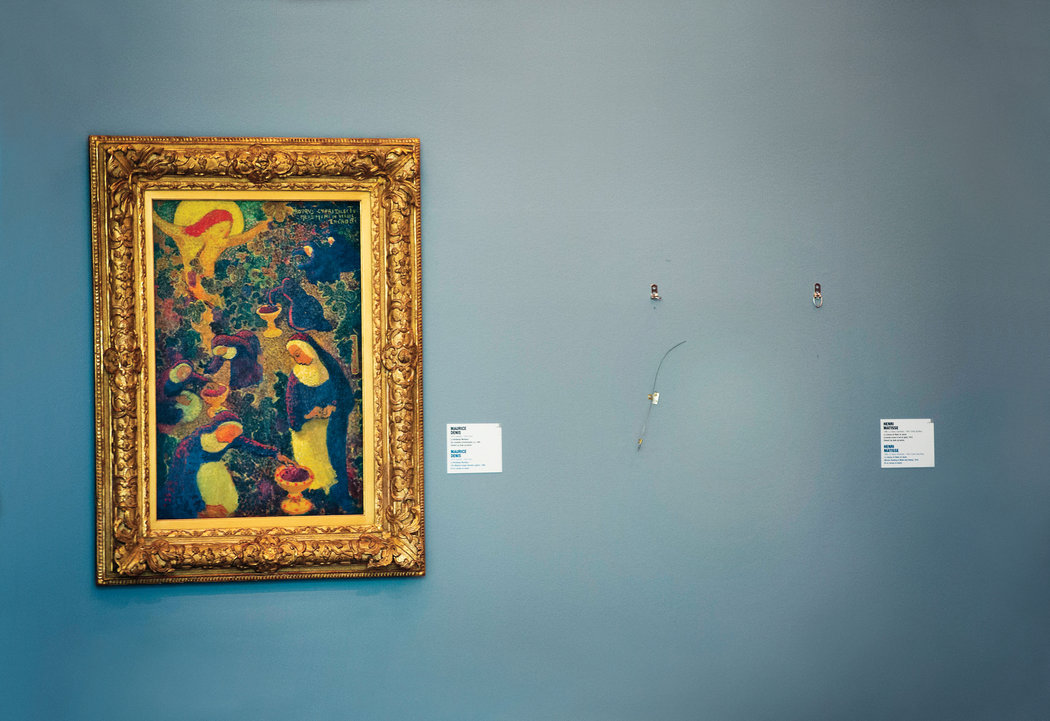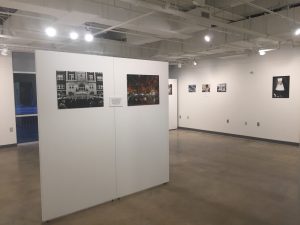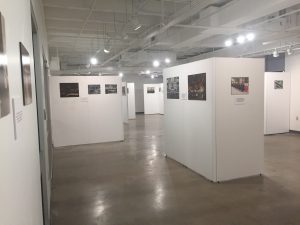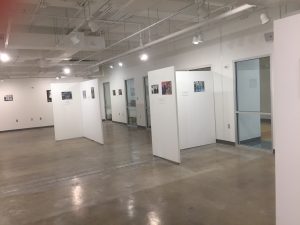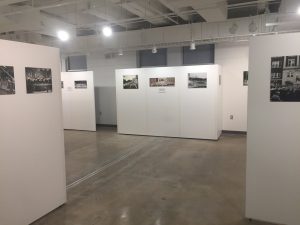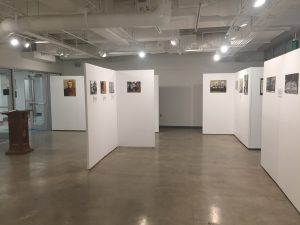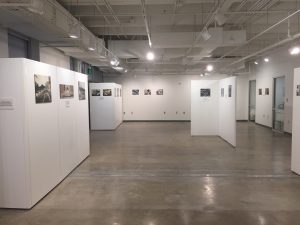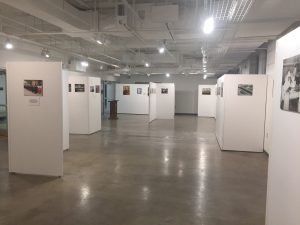The Birmingham race riots of 1963 left a scar on the city that sixty years could not heal. In 1990, the Birmingham Civil Rights Institute chose to embrace Birmingham’s legacy of progress amidst violence. Priscilla Hancock Cooper’s article A City Embraces Its Past, Looks to the Future illuminated me as to the changes implemented by the BCRI, despite strong backlash from the community, and alarm and resistance from Birmingham based businesses and corporations. The BCRI did nothing to alleviate the concerns of the community in choosing the site for their institute – adjacent to Sixteenth Street Baptist Church, which was the site of the 1963 Children’s Campaign composed of young demonstrators, as well as a bombing by those hostile to the movement. Cooper’s article begs the question of what extent are local historians willing to go to establish their site in an iconic place despite the hostility they must face to do so in such a contentious area. The location conjures feelings of hope and pain in equal measure, so it is understandable that many elements in the Birmingham community are hostile to the BCRI’s mission. The BCRI endures though, and the power of their exhibits is only anchored by the location they chose to display them.
Meme
Recuerdos y fotografias de Avenida Guadalupe
Recuerdos y fotografias de Avenida Guadalupe
For my group project this semester, I will be working with fellow classmate Geremy Landin on helping the Esperanza Peace and Justice Center coordinate a photo exhibit project. One of the working titles for this project is ‘Recuerdos y fotografias de Avenida Guadalupe’ translated to ‘Memories and photos from the Guadalupe Neighborhood’. As we start to sort through photos, we hope to find a recurring theme to organize the future exhibit. One working idea for a topic of this project will be the photos that we can match up to current areas of the neighborhood. For example, we will look through photos in an attempt to recreate photos in the same or similar areas as much as possible for family.
Creating a workflow and a photo archive
A major challenge of this project is creating a work flow and a a finders aid for those interested in looking through the collection in the future. There are multiple ways to organize the collection and this will likely take up the majority of our project time. One of the initial ways we can sort out photos is by those that we can identify coming from a particular street or house. I see two major outputs of this particular public history project and they would be the initial definition of scope and the creation of a way for future interested parties to continue to organize and catalog future photos for a rotating exhibit. The second major output would ideally be an exhibit that could be showcased either at the Casa de Cuentos or even at partner businesses in the neighborhood if given approval by Esperanza.
Timeline and future possibilities
In the future, I could see much more added to this project including helping Esperanza with oral histories and maybe even working together on where to showcase the photo exhibit outside of the neighborhood. Based on our group conversations, we believe that it will take a least a month for us to come up with a proper finders aid for cataloging a small portion of the Esperzanza photo collection. That means by the middle of October we will be able to start actually picking out some pictures for an exhibit. We discussed the idea of putting some of this material online although we feel this aspect of the project may be limited to what we can create in an online blog that the Esperanza website can link to if they choose to share the online exhibit that we may be able to accomplish by the end of the semester.
Sources for project and possible policy discussions
We believe that there is enough material that a true digitization project would be beyond the focus of the scope of this semester’s project. For our sources, we plan to reach out to the Esperanza Center and work with the volunteer who has already done a lot of the work on creating the neighborhood photo project to seek this person’s thoughts and feedback on what has been done in the past and what can be done in the future. One challenge that we will face with this project is how much Esperanza already has on their plate as a non-profit organization. Our ability to reach out to sources in the neighborhood may also be an additional challenge as we are not sure how many details are known about the photos that have been accepted as donations. We hope to suggest a potential photo donation acceptance policy that will help with future additions to the photo project. We believe that the cost to complete the project for this semester will be relatively little as most of the project will be creating a structure for future neighbors to come and look through the donated photo archive. There may be a need for a few bankers boxes and some manilla folders. We are open to the needs of Esperzana with this project and will adjust the scope and focus of the semester project as we discuss further with the class and get feedback.
Resource Recommendation #4
“Reclaiming” Detroit by Kaeleigh Herstad was quite a gripping expose on potential damages that urban renewal and gentrification can have to history and the legacy of the people inhabitating the area. Most of us are familiar with the state of urban decay that has been ongoing in Detroit for decades, and arguably for the better part of the last century. Efforts are being made by city officials and representatives of private interest groups to destroy and rebuild the numerous blighted districts of Detroit. Consequently, entire blocks of historic neighborhoods and business are being leveled and reconstructed. Herstad argues that while the motivations of these officials is for ‘the greater good’ and to create progress and make the city more affluent, the legacy and ‘proof’ of the true heritage of the city are being destroyed piece by piece. At its core, Herstad argued that issues of racism are at play and acting in force with the removal of the ‘blight’ afflicting Detroit. Therefore, while actively rebuilding and renovating the area might improve quality of life, it may also be making the elements that made the blight come into place in the first place obscured and less likely to be dealt with in the future. The issues of racism and how it affects discrepancies in income and education are argued to be one of the primary sources of the problem, and with the destruction of that legacy, it is likely a problem to persist and occur again in some years.
Resource Recommendation #3
The Emergence of the Field of African American Museums by Jeff Hayward and Christine Larouche, in an article sponsored and published by the NCPH offered a discussion and brief history of the movement to establish a broad and enduring circuit of African American museums in the United States. Hayward and Larouche offered a great deal of information from multiple sources, including community polls, interviews with staff of the Association of African American Museums, and the sources of the funding for such projects.
It was of particular interest that many of these museums are well established and frequently visited, contain a great deal of works, and yet were entirely privately funded. Private donorship and contributions from collectors inspired by the mission of the AAAM to “enhance the ability of those museums to serve the needs and interests of persons of African ancestry and those who wish to know more about the art, history and culture of African-derived culture,” are what allow the movement to thrive.
The article really spoke to me on an individual level, as well as simply being related to the field discussed. I am in fervent support of smaller, independent museums dedicated to the education and interpretation of artifacts from cultures that are woefully without adequate representation in the mainstream.
Arte y Corazón
Last week I had the opportunity to once again visit the Rinconcito de Esperanza to support the MujerArtes Women’s Clay Cooperative. To celebrate their one year anniversary in the the new earth block studio, the Esperanza Center hosted a celebration and week-long art sale.
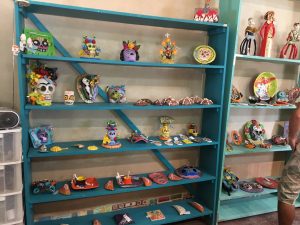
The mujeres who make up this cooperative use clay as a medium to illustrate historical snapshots of their lives. Each piece is intricately crafted, reflecting the artists’ cultural identity within her work. Since 1995, this program has welcomed a very diverse group of women to produce their art. These women commit to a certain number of studio hours per week, where they create artwork to sell to the community through various outreach programs. Although you wouldn’t be able to tell by looking at the artwork, most of these women are art novices, learning their craft alongside one another with the aid of an instructor and studio coordinator. Together, these women form a community, empowering each other through their shared passion of arte y cultura.
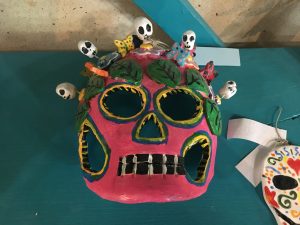
My fiancé and I scanned the rows of clay artwork, searching for our perfect match. I like to collect tiles so I selected a Selena tile for myself and picked out an ornamental la Virgen de Guadalupe, or Virgin Mary, for my grandma. My grandma was a migrant worker, as was my grandfather and their seven children. They traveled throughout the year, staying where the work was. I love to hear her stories about the past. My life is so vastly different from that of my grandma but through her stories about her life as a young girl, a mother, a migrant worker, and everything in between, I feel deeply connected to her. I went to visit my grandma later that day to give her la Virgen de Guadalupe I purchased for her at the art sale. She absolutely loved the gift and told me about the significance of the flowers that adorned the feet of la Virgen, the patron saint of Mexico.
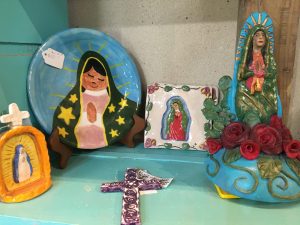
The flowers are symbolic, each kind specifying a virtue that the Virgin Mary exemplifies. These flowers include “the rose (Rosa canina), which was adopted as the emblem of Mary’s love of God; the white lily (Lilium candidum, Madonna lily), her purity; the myrtle (Myrtus communis), her virginity; and the marigold (Calendula officinalis), her heavenly glory.”
As an aspiring Public Historian, I am inspired by the MujerArtes. It is wonderful to see their culture embraced and celebrated through transformative works of art. By creating a tangible piece of their past, they are helping to preserve it and spurring a continual conversation. By gifting the Virgin Mary shrine to my grandma, I was able to hear a story from her and learn something new. I am thankful to the Women’s Clay Cooperative for giving me a gift that opened up this conversation. I hope to capture the spirit of the MujerArtes in my professional career.
To learn more about these amazing and talented artists, take a look at their profiles here: MujerArtes Artists
Eating Your Way Through History
During my time in class this semester I have learned about the power of internet podcasts. One, in particular, has really caught my attention called, Stuff You Missed in History Class. Listening to this podcast in my room as I am folding clothes I stumble upon an interesting interview. A woman by the name of Anne Byrn’s has written a book by the name of American Cookie. I don’t know if I was just hungry at the time or just the idea that a history podcast will be talking about cookie but something caught my attention.
The book is a mixture of a cookbook and a historical narrative. From the interview, anyone can see how much heart she has put not only in the research but in the recipes also. She speaks of having to decipher many of these recipes through trial and error due to many of them being lost in translation. It is easy to ignore or not even realize the importance of food culture is to the present and the past.

A great example she points out in her interview is women from New Orleans in the past century who could not make ends meet used food to survive. Lower class women would pass on recipes for candies, cookies, and brittles to their children. This is an important exchange because of the many upper-class women did not know how to make these goodies or were too nervous to even try. Working with candy was extremely difficult and dangerous even to this day. These lower-class women will sell these candies after church to the community in order to make the money needed to survive.
Ms. Byrn’s talks about the ingredients that go into every cookie and how they differ from region and state. For just being a cookie many would not think that there could be so many combinations. All the way down to different types of fats are used and how they can change through the generations that are being passed down by.
These are just some of the great aspects of this podcast and book. Bringing to light the interesting precedent food has on our past. Making me think of my own cultural sweets and how they may represent me and my past.
https://www.missedinhistory.com/podcasts/interview-anne-byrns-american-cookie.htm
Resource Recommendation #2
The Finger Saga, an article written by Rebecca Mancuso of University of California Press, and featured in The Public Historian, brought to light the issue of the preservation and display of human remains in an academic setting.
The remains in question are a set of severed fingers placed in a jar that were retrieved from a crime scene. The article describes the ways in which the tragedy of the circumstances surrounding the fingers have been reduced and objectified for financial gain. At what point do human remains stop being ‘sacred’ and become an artifact? Worse yet, issues of morality come into play when using human remains for display and to attract visitors for money. It’s a very delicate issue, and many suggest that we simply tow the line between preservation and education and simple objectification and abuse.
These negatives are offset by the beneficial elements of the museum’s mission regarding the object: to educate the public about domestic violence and the worst outcomes imaginable.
Art Theft: A Crime as Old as Art Itself
When one imagines the theft of a painting or sculpture worth hundreds of thousands of dollars, even millions, what comes to mind is a spicy affair — involving at least one super spy, an alarm system hacker, and getaway driver, just to start. But even the most high profile art theft of all time, the theft of da Vinci’s “Mona Lisa” in 1911 wasn’t much more than an employee stuffing the darn thing/priceless artifact into his smock (More deets here). It was easier then than it is now, of this much I’m sure, but every year it seems that the FBI’s National Stolen Art File only grows in size. This much is a shame, sure, but what if I told you that reputable museums deal in stolen art all the time?
Initially, it may seem hard to believe that institutions like that of the New York Metropolitan Museum of Art, affectionately dubbed ‘The Met’ would involve themselves in a seedy criminal underbelly to score some sketchy art, but it is far more common than one would think. Often, it is difficult to track the origin of an artifact, some 85-90 percent of the artifacts on the market being without provenance, making it difficult to discern if something was once stolen, or far more commonly, looted. Sure, something as popular as the Mona Lisa is too high profile to pawn off on an unsuspecting museum or private collection acquisitions team (this actually being an issue for many art thieves), but what of far older artifacts from civilizations long ago? Their long-dead creators surely are not on the hunt for their stolen work, but more recently, the practice of ‘repatriation’ has allowed the cultures that have been utterly looted to regain what is theirs.
‘Repatriation‘ describes the act of a person returning to their country of origin, making it a form of homecoming. In the world of museums and artifacts, this word was repurposed by historians and curators to describe the act of willfully returning a stolen or looted item to its home, wherever that may be, after learning that it was ill-begotten. If that is the case, you may be wondering how so many American ‘Universal Museums’ have such extensive foreign collections, including whole mummies and precious Japanese ceramics. Simply put, this is because there are no real guidelines for repatriating objects or determining whether they should be returned at all. Much of this is on the honor system, reporting to The International Council of Museums when something “seems fishy”, though one could just as easily grow a collection without giving responsible acquisition a second thought.
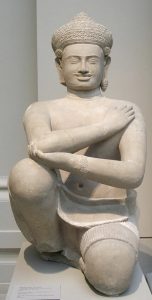
Ethically, there is much debate about whether artifacts should be repatriated at all, as it can be difficult to say that particular items belong to a culture. Should we not all have the capability to take pleasure in looking at artifacts from overseas and long ago? Simply put, it’s complicated, and for that reason repatriation is considered on a case by case basis. Do all of the nine trillion Roman marble statues need to be returned to Italy? Perhaps not. Does one of the only nine Cambodian statues from Prasat Chen need to be returned? I’d wager that’s a yes. (And it is, LOOK!).
All this to say, it can be difficult to discern which public a history or historical artifact actually ‘belongs’ to, as legally and ethically, there is very little groundwork for this. Art theft isn’t just a glamorous crime for trade in the millions, it’s a sadly long-standing tradition of our culture of colonization.
Dr. Gilberto Hinojosa
For as long as I can remember, there have been a number of things consistent for me that fed my hunger for learning more about my family’s history. One of those things has been the ties that my family has to San Antonio. While little is known by those still living, one thing that has been repeated by many is that our links to this city are concrete enough that we have seen some of the expansion of San Antonio. As I moved into college and came upon a more in-depth knowledge of some of the founding years of San Antonio, it excited me to expand on areas I thought pertained to my story. More specifically, this accrued for me in the spring of 2015 when I took a class titled “Tejano Texas” with Dr. Gilberto Hinojosa at Incarnate Word University.
For years I had heard of the many accolades of Dr. Hinojosa. Currently Professor Emeritus, stories of his time at UIW commonly filled a room when discussing the early years at UIW. For me, it was intriguing to hear these stories because as a kid, my formative years were very selectively filled with a Latino figure in which to emulate. In learning of Dr. Hinojosa leading up to enrolling for his class, I found many similarities in our upbringing. As a result of this, I was able to see what was possible for a Latino who didn’t necessarily have the odds in his favor. It was during his class that significant pieces of Latino history were brought to my attention, reigniting a fire in me that I didn’t know remained. Additionally, a constructive pride for this university I had found myself was cementing itself as I was only one semester away from being able to say I was a college graduate.
Fast forward now to the spring of 2017. As I assume is common for all graduates, from time to time I found myself back at UIW. Exact to every other trip I made, before leaving campus I always make it a point to stop by the offices of old professors to say hello. Being a professor Emeritus, it isn’t always easy to find Dr. Hinojosa but, on this day, he happened to be in his office. As he has always done, upon seeing me, as I approached he invited me into his office for a seat. It was during this conversation in between jokes and family updates that he began to talk to me about a project he was starting. He mentioned it was similar to another project a colleague of his was producing, a Dr. Gerald Poyo. He explained to me it was going to be a photographic exhibit on the history of the sisters of charity of the Incarnate Word. He revealed to me that while he was still in the planning phase, he planned to reach out to the students of the university for input regarding what they sought in memorializing their university
Excited by this idea I immediately informed him of my willingness to assist on this project in any way possible, assuming he was open to allowing me. This may have been the plan all along because he immediately agreed and expressed that he would communicate with me as needed. As time Passed and the semester came to an end, I actually began to worry as I wasn’t hearing from Dr. Hinojosa. Concerned that maybe I might have been misled, I sent Dr. Hinojosa an email reaffirming my interest in his project. Too much excitement, this email was returned with an invitation for pecan pie and coffee. Thru the end of the spring semester and into the summer of 2018, these occasional meetings continued where we talked about his ideas over pecan pie and coffee. Realizing now that my role in all this was merely as an advisor of sorts, I took pride in knowing that he was acknowledging my ideas. For me, just to have the opportunity to work in some capacity with him was so rewarding. Little did I know, in working with him it would stir a new fire in me for Public history. As I move forward in my journey pursuing a degree at St. Mary’s, never will I forget the role Dr. Hinojosa played not only in my undergrad but in beginning my pursuit toward a graduate degree.


